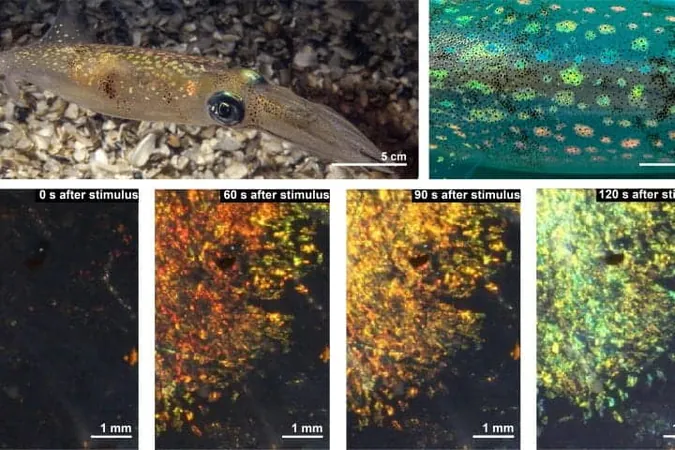
Unlocking the Mystery: How Squids Change Color with Stunning Precision!
2025-07-25
Author: Daniel
The Secret Behind Squid Coloration Revealed!
Squids and octopuses have always amazed us with their ability to change color in the blink of an eye. Finally, scientists have unraveled how these cephalopods achieve this incredible feat. Thanks to cutting-edge microscopy called holotomography, researchers in the US have discovered that the magic lies in intricate columns of platelets within squid skin cells.
Meet the Bragg Reflectors of the Sea!
These specialized structures, known as Bragg reflectors, manipulate light in extraordinary ways. By selectively reflecting and transmitting light at specific wavelengths, squids can transition from nearly transparent to vibrant hues, transforming their appearance instantly.
Alon Gorodetsky from the University of California, Irvine—who co-led the study—says, "This discovery not only sharpens our understanding of structural coloration in cephalopods but also opens new avenues for manipulating light in both biological and engineered applications."
Peering into the Iridescent World of Squids!
In their groundbreaking research, Gorodetsky and his team, including experts like Roger Hanlon from the Marine Biological Laboratory, focused on longfin inshore squids. By employing holotomography, they created three-dimensional images that showcased the unique refractive index changes across the squid's iridophores—cells responsible for color production.
Nature’s Brilliant Designers!
It's not just squids that utilize Bragg reflectors. For example, Morpho butterflies flaunt their striking blue wings thanks to nanostructured gratings, while the panther chameleon’s skin cells adjust color and regulate temperature using intricate photonic lattices.
Despite previous research on cephalopod pigmentation, Gorodetsky notes that the in-depth study of how squid splotches transition from transparent to colorful—while preserving their spectral purity—had not been explored thoroughly until now.
A Leap into Infrared!
Armed with advanced computational modeling, the researchers not only enhanced the understanding of squids but also began crafting artificial nanomaterials inspired by natural designs. These new materials, which combine Bragg reflectors and metal films, could change color in infrared wavelengths too.
Exciting Prospects Ahead!
The implications of this research are vast. The innovative materials might pave the way for adaptive camouflage or temperature-responsive textiles. Additionally, they hold promise for improving multispectral displays and sensors, making them a game-changer for technology in various fields.
Gorodetsky reveals the team's future plans: "We aim to further investigate how refractive index distributions shape light manipulation in other biological systems and refine our engineered materials for practical applications like advanced camouflage and wearable optical technologies."





 Brasil (PT)
Brasil (PT)
 Canada (EN)
Canada (EN)
 Chile (ES)
Chile (ES)
 Česko (CS)
Česko (CS)
 대한민국 (KO)
대한민국 (KO)
 España (ES)
España (ES)
 France (FR)
France (FR)
 Hong Kong (EN)
Hong Kong (EN)
 Italia (IT)
Italia (IT)
 日本 (JA)
日本 (JA)
 Magyarország (HU)
Magyarország (HU)
 Norge (NO)
Norge (NO)
 Polska (PL)
Polska (PL)
 Schweiz (DE)
Schweiz (DE)
 Singapore (EN)
Singapore (EN)
 Sverige (SV)
Sverige (SV)
 Suomi (FI)
Suomi (FI)
 Türkiye (TR)
Türkiye (TR)
 الإمارات العربية المتحدة (AR)
الإمارات العربية المتحدة (AR)